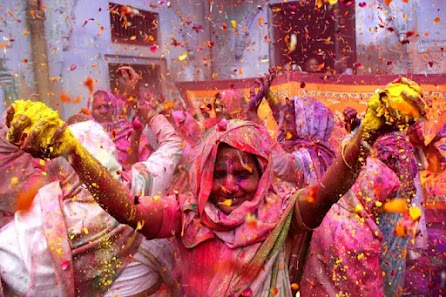HOLI FESTIVAL HISTORY IN ENGLISH
HOLI FESTIVAL HISTORY IN ENGLISH
Holi is an ancient Hindu festival celebrated annually on the full moon day (Purnima) in the Hindu month of Phalguna (usually falling in late February or early March). It is also known as the "festival of colors" or the "festival of love" and marks the arrival of spring.
The origin of Holi can be traced back to ancient Hindu texts and mythology. One popular legend associated with the festival is that of Holika, the sister of the demon king Hiranyakashipu. According to the legend, Hiranyakashipu had gained a boon that made him invincible. He became arrogant and ordered his subjects to worship him instead of the gods. However, his son Prahlad refused to obey and continued to worship Lord Vishnu. Angered by his son's disobedience, Hiranyakashipu decided to kill him. He asked his sister Holika, who had a cloak that made her immune to fire, to sit in a burning pyre with Prahlad in her lap. But Lord Vishnu intervened and saved Prahlad while Holika perished in the flames. The victory of good over evil is celebrated as Holi.
Another legend associated with Holi is the love story of Lord Krishna and Radha. It is believed that Lord Krishna, who had a dark complexion, was jealous of Radha's fair skin. His mother suggested that he smear Radha's face with colors to make her look like him. Since then, the tradition of playing with colors on Holi is said to have originated.
Over time, Holi has become a secular festival celebrated by people of all religions and cultures. It is a time to forget grudges and renew relationships with family and friends. People smear each other with colors and exchange sweets and gifts. In some parts of India, it is also celebrated as a harvest festivals.
Today, Holi is celebrated not only in India but also in many other parts of the world, including Nepal, Bangladesh, Pakistan, and parts of Europe and North America.








Comments
Post a Comment